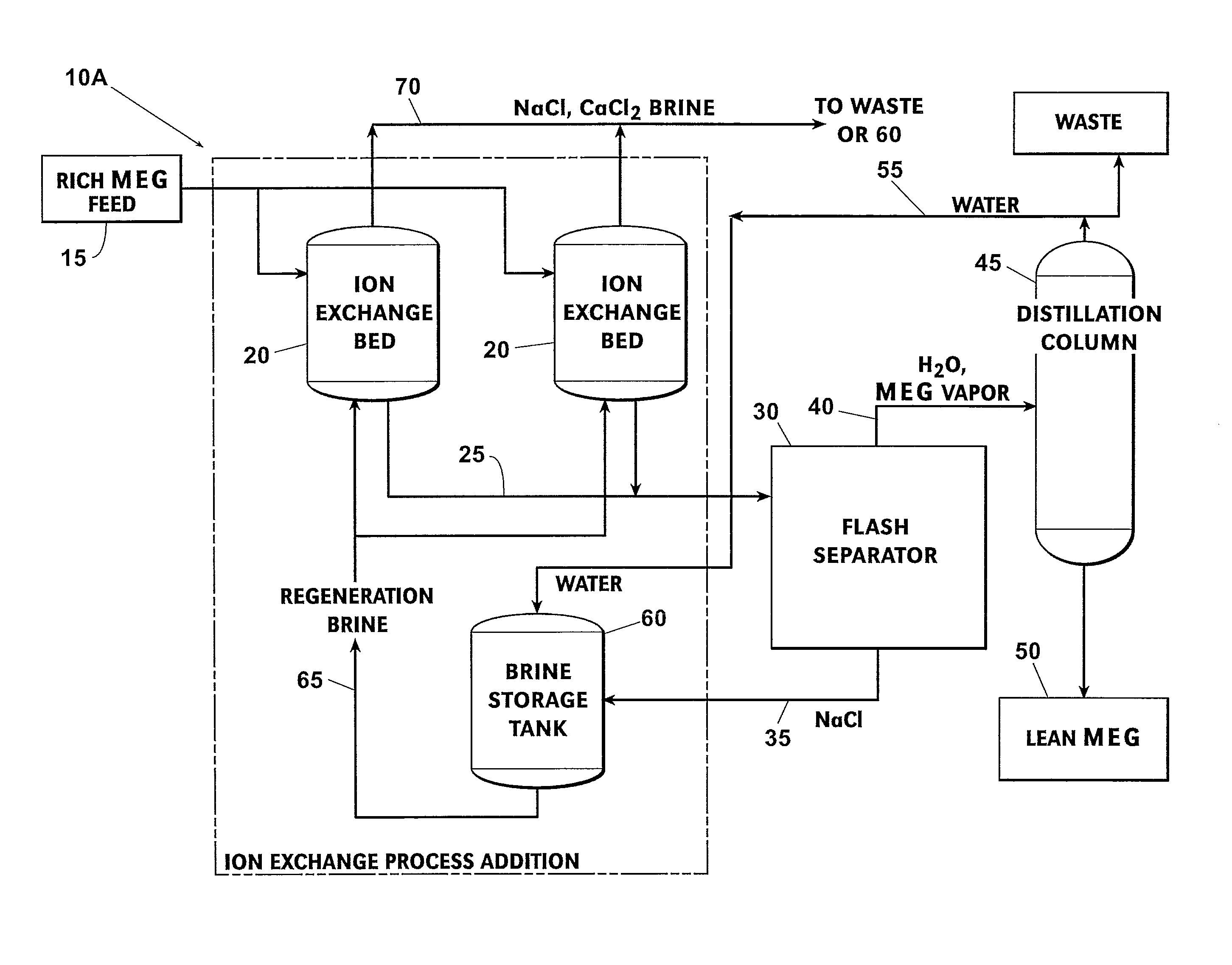Divalent cation removal from rich monoethylene glycol (MEG) feed streams by ion exchange
a monoethylene glycol and ion exchange technology, applied in the direction of ion exchangers, cation exchanger materials, separation processes, etc., can solve the problems of large and expensive equipment, failure of the reclamation or regeneration process, and inability to recover lean meg, so as to reduce the volume, footprint and cost of processing equipment, and eliminate the need for additional chemicals
- Summary
- Abstract
- Description
- Claims
- Application Information
AI Technical Summary
Benefits of technology
Problems solved by technology
Method used
Image
Examples
Embodiment Construction
[0028]An ion exchange process may be used to remove divalent cations from the rich MEG feed stream before the feed stream enters the MEG reclamation process, as shown in FIG. 1, or the MEG regeneration process, as shown in FIG. 2. This ion exchange process is different than conventional water treatment because the rich MEG feed stream is more viscous than water and interacts differently with the ion exchange resins. In addition, the ion exchange resins of the present invention are subject to higher concentrations of sodium and calcium than would generally be found in water treatment systems.
[0029]As shown in FIG. 1, a preferred embodiment of a divalent cation removal process 10A practiced according to this invention begins with the rich MEG feed stream 15, which is a mixture of produced water and MEG. The rich MEG feed stream 15 is routed to a divalent cation removal step comprised of dual ion exchange beds 20 which contain a strong cation exchange resin in the sodium form and alter...
PUM
| Property | Measurement | Unit |
|---|---|---|
| concentration | aaaaa | aaaaa |
| solubility | aaaaa | aaaaa |
| physical properties | aaaaa | aaaaa |
Abstract
Description
Claims
Application Information
 Login to View More
Login to View More - R&D
- Intellectual Property
- Life Sciences
- Materials
- Tech Scout
- Unparalleled Data Quality
- Higher Quality Content
- 60% Fewer Hallucinations
Browse by: Latest US Patents, China's latest patents, Technical Efficacy Thesaurus, Application Domain, Technology Topic, Popular Technical Reports.
© 2025 PatSnap. All rights reserved.Legal|Privacy policy|Modern Slavery Act Transparency Statement|Sitemap|About US| Contact US: help@patsnap.com



